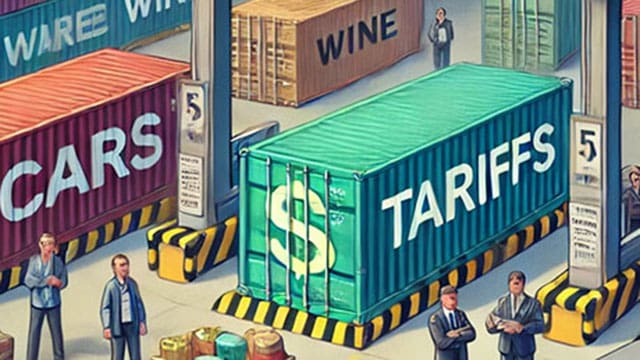Diversification is key to protecting Canada’s economy from trade shocks such as Trump’s tariffs

For interview requests, click here
Those fortunate enough to have accumulated savings in these challenging times want to see them grow or, at the very least, maintain their value. The first rule of ensuring savings and investments do not disappear is to diversify.
That rule is often summed up as, “Don’t put all your eggs in one basket.” The future is uncertain, and any single financial asset can unexpectedly move in the wrong direction. However, with broad or even moderate diversification, the prospects for a portfolio are much improved.
The benefits of diversification extend beyond managing family assets. They also apply to companies. Well-run businesses rely on more than one customer to avoid the risk of being left high and dry if that customer is lost. They also seek multiple suppliers so that the loss of any single supplier does not leave them stranded, a lesson many firms learned during the disruptions caused by COVID-19.
Canada, however, has failed to learn this lesson as a nation. As a country with a small domestic market, we depend heavily on foreign trade. Over 30 per cent of our economy is tied to the export sector, and 72 per cent of those exports go to the United States. Such heavy reliance on a single customer leaves Canada dangerously exposed to shifts in U.S. trade policies and economic conditions.
This is no accident. Canada’s vulnerability is not just the result of U.S. protectionism but also decades of domestic complacency and failure to diversify, compounded by the Trudeau government’s missed opportunities.
U.S. President Donald Trump’s threats of significant tariffs against Canada only highlight the risks of this dependence. While across-the-board tariffs would be a total economic disaster, they are unlikely. Such measures would hurt Americans too, as 70 per cent of what Canada provides is critical to their supply chains. Nonetheless, targeted tariffs and other barriers against specific industries are far more likely, and these would be enough to harm us north of the border. Canada cannot afford to sit idle, waiting to see where the axe will fall.
The answer is not to impose retaliatory tariffs or embrace protectionist policies of our own. That would hurt Canada as much, if not more, than the U.S., creating a race to the bottom and leading to long-term economic decline.
The solution is economic diversification. We are in this precarious position because, collectively, as a nation, we have put almost all our eggs in the basket of the U.S. market. What we need is a broader range of customers outside the United States. This shift will not be easy, but it is essential if we are to safeguard our economy against future shocks.
British Columbia’s lumber industry provides a cautionary example. For years, the province’s economy was so tied to American housing starts that one could forecast its performance with a single number. When U.S. housing starts declined or restrictions were placed on lumber imports—issues that persist today—the industry faltered, and the province suffered. Occasionally, B.C. firms sought customers in Europe or other regions, but as soon as demand in the U.S. rebounded, they returned to their old ways. This kind of short-term thinking must end.
Canadian producers across all industries must find and maintain customers on other continents. This effort should have started long ago. One does not wait for a rainy day to fix a hole in the roof.
Admittedly, reducing dependence on the U.S. market is a significant challenge. Canada has been spoiled by a major customer that is geographically close, operates in the same time zones, speaks the same language, and shares similar business and legal structures.
But other markets, such as those in Europe and Asia, offer immense opportunities. With focus and determination, Canada can tap into these markets. We have an abundance of sought-after products and services and enjoy an excellent reputation as a safe, stable, and reliable trading partner. Furthermore, many Canadians or their families come from diverse regions of the world, bringing invaluable knowledge of languages, customs, and business practices in those markets.
Every cloud has a silver lining. The looming threat of U.S. protectionism should motivate Canada to finally diversify its trade and markets. Let us not squander this moment. It is time to stop putting all our eggs in one basket.
Dr. Roslyn Kunin is a respected Canadian economist known for her extensive work in economic forecasting, public policy, and labour market analysis. She has held various prominent roles, including serving as the regional director for the federal government’s Department of Employment and Immigration in British Columbia and Yukon and as an adjunct professor at the University of British Columbia. Dr. Kunin is also recognized for her contributions to economic development, particularly in Western Canada.
Explore more on Trade, Canadian economy, Trump administration, Trudeau government, Canada-U.S. relations
Troy Media is committed to empowering Canadian community news outlets by providing independent, insightful analysis and commentary. Our mission is to support local media in building an informed and engaged public by delivering reliable content that strengthens community connections, enriches national conversations, and helps Canadians learn from and understand each other better.

